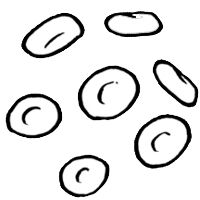Cemiplimab Monotherapy Induces 50% ORR in Hodgkin Lymphoma
Treatment with the novel PD-1 inhibitor cemiplimab induced responses in half of the patients with Hodgkin lymphoma in a phase I study of patients with B-lymphoid malignancies; among patients with B-cell non-Hodgkin lymphoma treated with the monotherapy, the overall response rate was 11.1%, according to a poster presentation at the 2017 ASH Annual Meeting.

Treatment with the novel PD-1 inhibitor cemiplimab induced responses in half of the patients with Hodgkin lymphoma (HL) in a phase I study of patients with B-lymphoid malignancies; among patients with B-cell non-Hodgkin lymphoma (B-NHL) treated with the monotherapy, the overall response rate (ORR) was 11.1%, according to a poster presentation at the 2017 ASH Annual Meeting.
When the agent was combined with the monoclonal antibody REGN1979, the ORR was 8.3% in patients with B-NHL.
In the ongoing open-label multicenter dose-escalation study, there were 62 patients in the monotherapy cohort, including 36 patients with B-NHL and 26 with HL. The B-NHL group comprised 18 patients with diffuse large B-cell lymphoma (DLBCL), 11 with follicular lymphoma (FL), and 7 with other B-NHLs.
The median age in the cemiplimab monotherapy arm was 56.3 years, 64.5% of patients were male, and 91.9% of patients were white. The ECOG performance status was 0 for 43.5% of patients and 1 for 54.8% of patients. The median number of prior lines of therapy was 3 (range, 1-12) and the median time from initial diagnosis to first dose was 33.0 months (range, 6-280).
In the combination arm, with included 12 patients with indolent or aggressive B-NHL, the median age was 59.5 years, 50% of patients were female, and all patients were white. The ECOG performance status was evenly split between 0 and 1. Ten patients had DLBCL, 1 patient had FL, and 1 patient had another B-NHL. The median number of prior therapies was 4 (range, 1-9) and the median time from initial diagnosis to first dose was 20.7 months (range, 7-198).
In the cemiplimab monotherapy arm, 6 patients (5 B-NHL and 1 HL) received 1 mg/kg every 2 weeks for a minimum of 12 and a maximum of 24 doses. The remaining 56 patients (31 with B-NHL and 25 with HL) received 3 mg/kg every 2 weeks for a minimum of 12 and a maximum of 24 doses.
In the combination arm, all patients received 3 mg/kg of cemiplimab every 2 weeks for a minimum of 12 and a maximum of 24 doses. REGN1979, a bispecific anti-CD20 and anti-CD3 monoclonal antibody based on an IgG4 isotype, was administered IV weekly for 11 doses, followed by every 2 weeks dosing from week 13 for 11 additional doses. REGN1979 is administered at an initial dose followed by a step-up dose if the initial starting dose is tolerated.
At the data cutoff, 11 of 62 patients remained on treatment in monotherapy arm. Disease progression was the primary reason for discontinuation (n = 33). In the combination arm, 2 patients remained on treatment and 10 discontinued, mainly due to disease progression (n = 8).
The median duration of exposure was 13.9 months (range, 2-55) among patients receiving cemiplimab monotherapy, with a median of 7 (range, 1-24) doses administered. In the combination arm, the median duration of cemiplimab exposure was 12.7 months (range, 2-33), with a median of 6 doses delivered (range, 1-17). The median duration of REGN1979 exposure was also 12.7 months, with a median of 11 doses delivered (range, 2-22).
Among patients with B-NHL receiving single-agent treatment, the complete response (CR) rate was 8.3% and the partial response rate was 2.8%, with 22.2% of patients having stable disease (SD) and 52.8% of patients with progressive disease (PD). There were 3 CRs and no PRs among patients with DLBCL and 0 CRs and 1 PR among patients with FL. In patients with HL receiving monotherapy, the CR rate was 26.9% and the PR rate was 23.1%, with 30.8% of patients having SD and 19.2% of patients with PD.
In the combination arm, there was 1 PR, 4 patients with SD, and 5 patients with PD.
Among patients in the monotherapy arm receiving 1 mg/kg of cemiplimab, all-grade treatment-emergent adverse events (TEAEs) occurred in 2 of 6 patients, with 1 incidence each of fatigue, chills, and infusion-related reaction (IRR). There were no treatment-related deaths.
In the 3 mg/kg group in the monotherapy arm, TEAEs occurred in 78.6% of patients, grade ≥3 TEAEs occurred in 28.6% of patients, 19.6% of patients had serious TEAEs, and there 3 treatment-related deaths. The most common TEAEs included fatigue (12.5%), pyrexia (12.5%), chills (8.9%), IRR (8.9%), nausea (8.9%), diarrhea (7.1%), and neutropenia (7.1%).
All patients in the combination arm experienced TEAEs, 83.3% of patients had grade ≥3 TEAEs, and 66.7% had serious TEAEs. The most common TEAEs included CRS (n = 11), pyrexia (n = 10), ALT increase (n = 7), AST increase (n = 6), blood lactate dehydrogenase increase (n = 6), and GGT increase (n = 6).
There were no dose-limiting toxicities. Grade ≥3 TEAS occurring in more than 1 patient included lymphopenia (n = 4); leukopenia, ALT, and AST increase (3 cases each); and neutropenia and neutrophil count decrease (2 cases each)
Evaluation of cemiplimab monotherapy and the combination of cemiplimab and REGN1979 continues in ongoing research.
Reference:
Topp MS, Borchmann P, Wagner-Johnston ND, et al. Safety and preliminary antitumor activity of the anti-PD-1 monoclonal antibody REGN2810 alone or in combination with REGN1979, an anti-CD20 x anti-CD3 bispecific antibody, in patients with B-lymphoid malignancies. Presented at: 2017 ASH Annual Meeting and Exposition; December 9-12, 2017; Atlanta, Georgia. Abstract 1495.
Examining the Non-Hodgkin Lymphoma Treatment Paradigm
July 15th 2022In season 3, episode 6 of Targeted Talks, Yazan Samhouri, MD, discusses the exciting new agents for the treatment of non-Hodgkin lymphoma, the clinical trials that support their use, and hopes for the future of treatment.
Listen